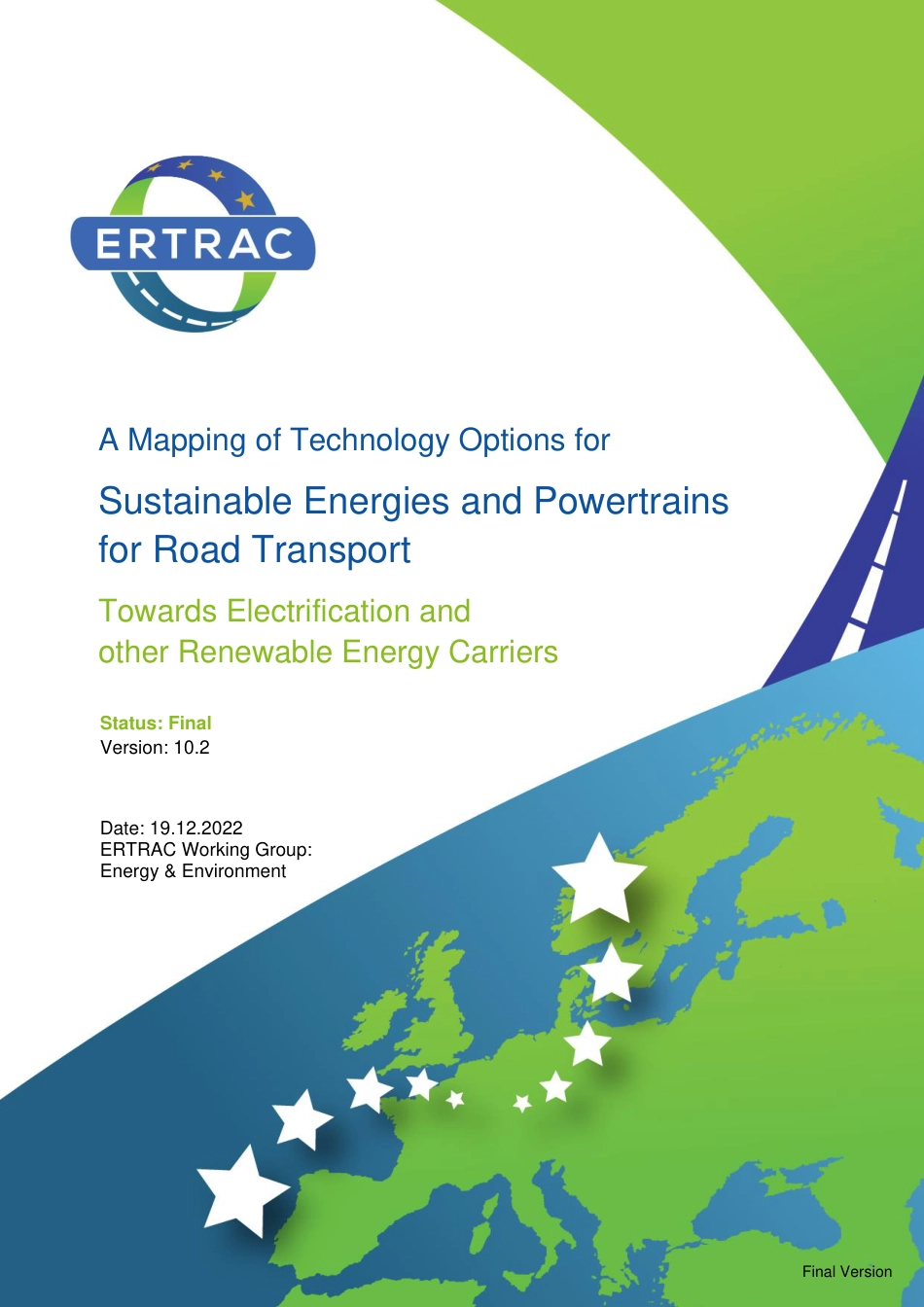Final Version A Mapping of Technology Options for Sustainable Energies and Powertrains for Road Transport Towards Electrification and other Renewable Energy Carriers Status: Final Version: 10.2 Date: 19.12.2022 ERTRAC Working Group: Energy & Environment www.ertrac.org Page 2 of 169 Final Version Contributors Coordinating authors Roland Dauphin, Concawe Simon Edwards, Ricardo André Jarasse, Renault Michael Weißner, Volkswagen AG Contributing authors* Xavier Aertsens, ERTRAC Josef Affenzeller, AVL Patrik Akerman, Siemens Jens Andersen, NGVA Jon Andersson, Ricardo Antoine Aslanides, EDF Mohamed El Baghdadi, VUB Lucie Beaumel, EGVIA Maitane Berecibar, VUB Isotta Cerri, Toyota Motor Europe Ivo Cré, POLIS Stefan Deix, EUCAR Benoit Engelen, TotalEnergies Andrea Gerini, NGVA Thierry Goger, FEHRL Umberto Guida, UITP Bernard Jacob, UGE Tomaž Katrašnik, University of Ljubljana Martin Kullman, Volkswagen AG Dorothée Lahaussois, Toyota Motor Europe Magnus Lindgren, Trafikverket Brigitte Martin, IFPEN Marco Mammetti, IDIADA Joeri van Mierlo, VUB Stephan Neugebauer, BMW Gaetano de Paola, IFPEN Antonio Perez, IDIADA Marco Pieve, Piaggio Luis De Prada, EUCAR Peter Prenninger, AVL Mats Rosenquist, Volvo Zissis Samaras, LAT Christof Schernus, FEV Isabelle Schnell-Lortet, Volvo Thorsten Schnorbus, FEV Hendrik Schroeder, Volkswagen AG Stanislav Severov, Volkswagen AG Frank Seyfried, Volkswagen AG Armin Sue, Volkswagen AG Denise Tapler, AVL Christer Thorén, Scania Thomas Vercammen, ACEM Marlena Volck, AVL Verena Wagenhofer, AVL Carsten Weber, Ford Colin-Yann Jacquin, Michelin Marta Yugo, CONCAWE *Note, the affiliation is given as at the time of contribution. Disclaimer This document has been prepared by the community of researchers who are mem...



